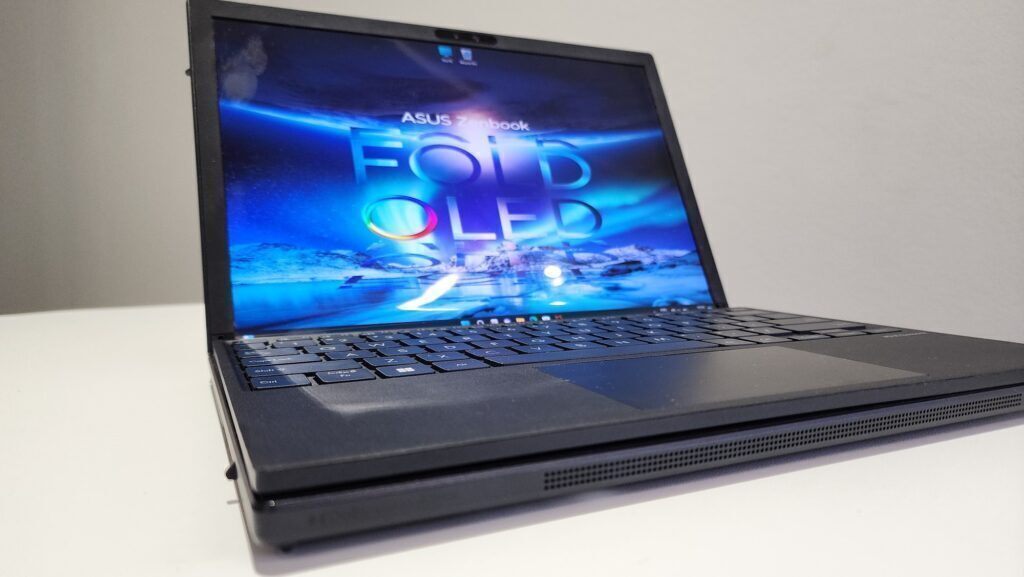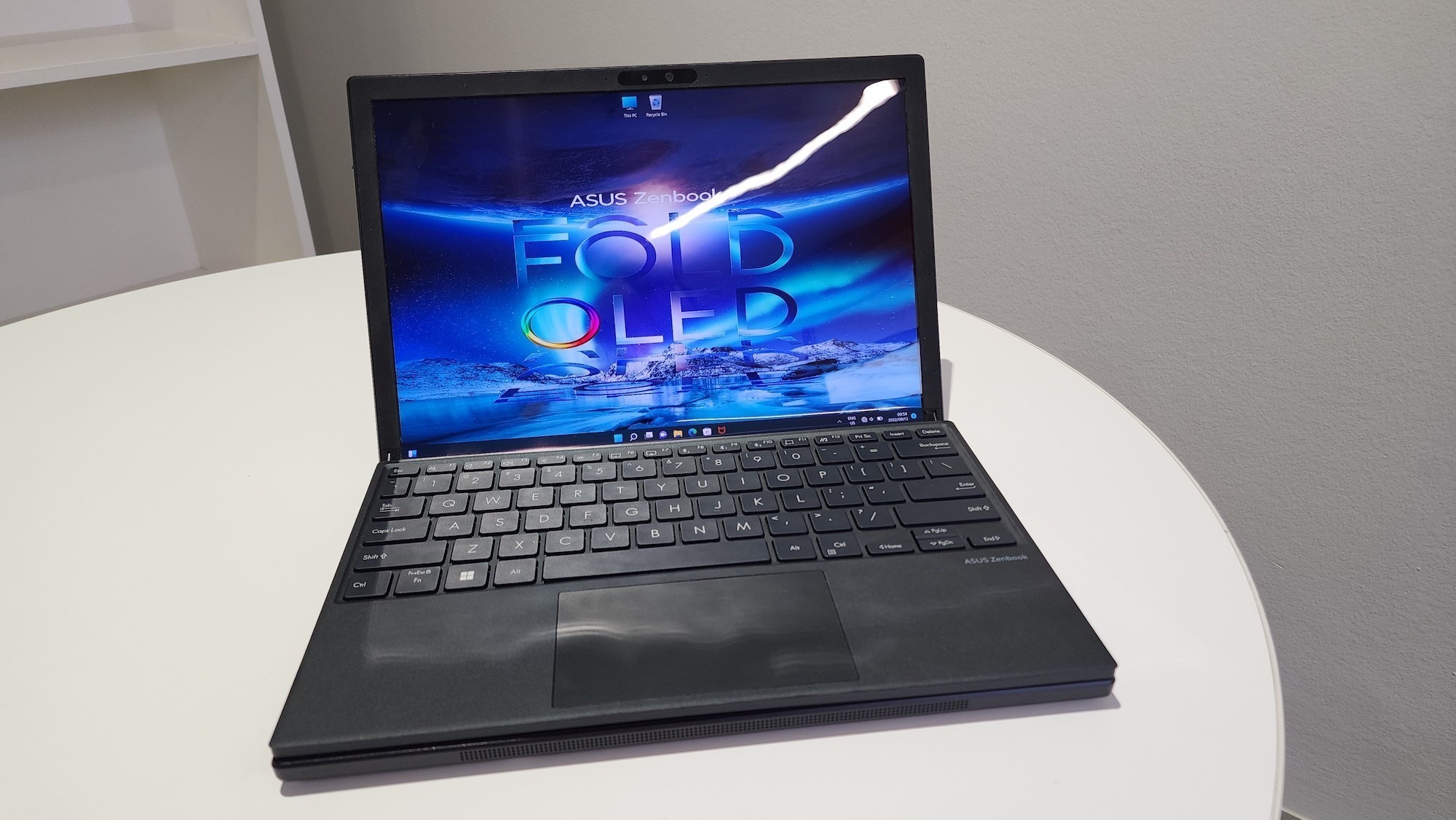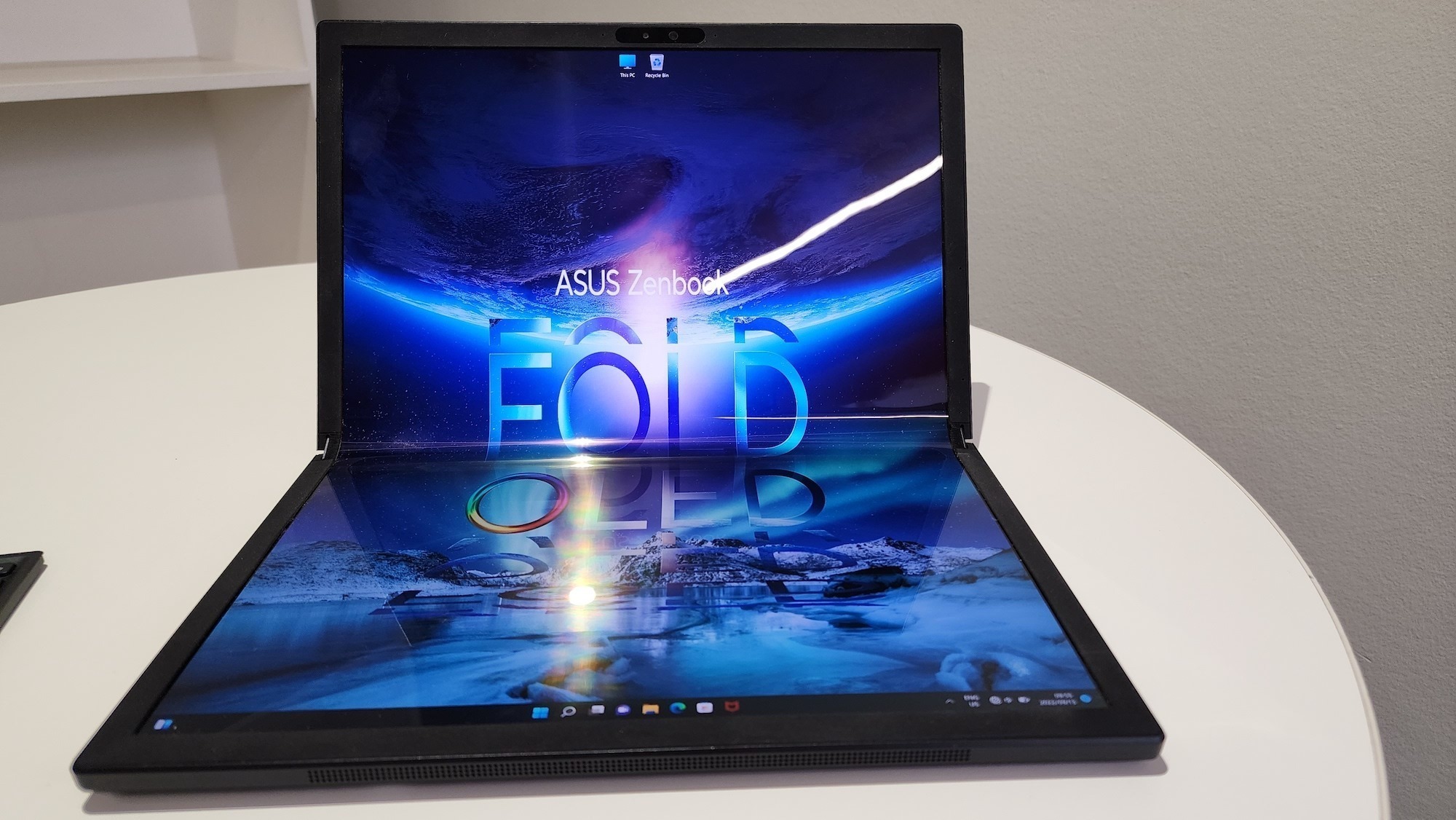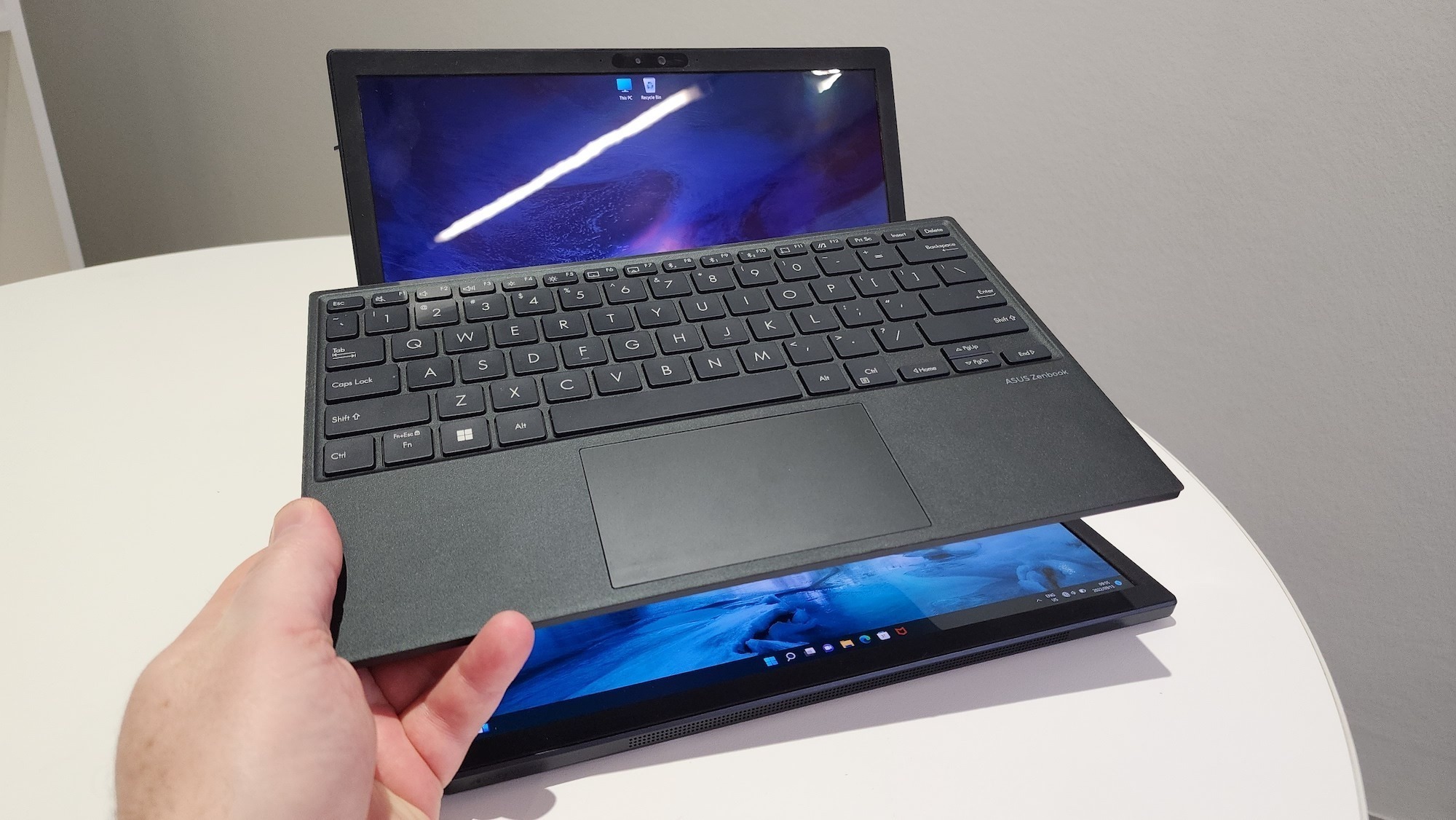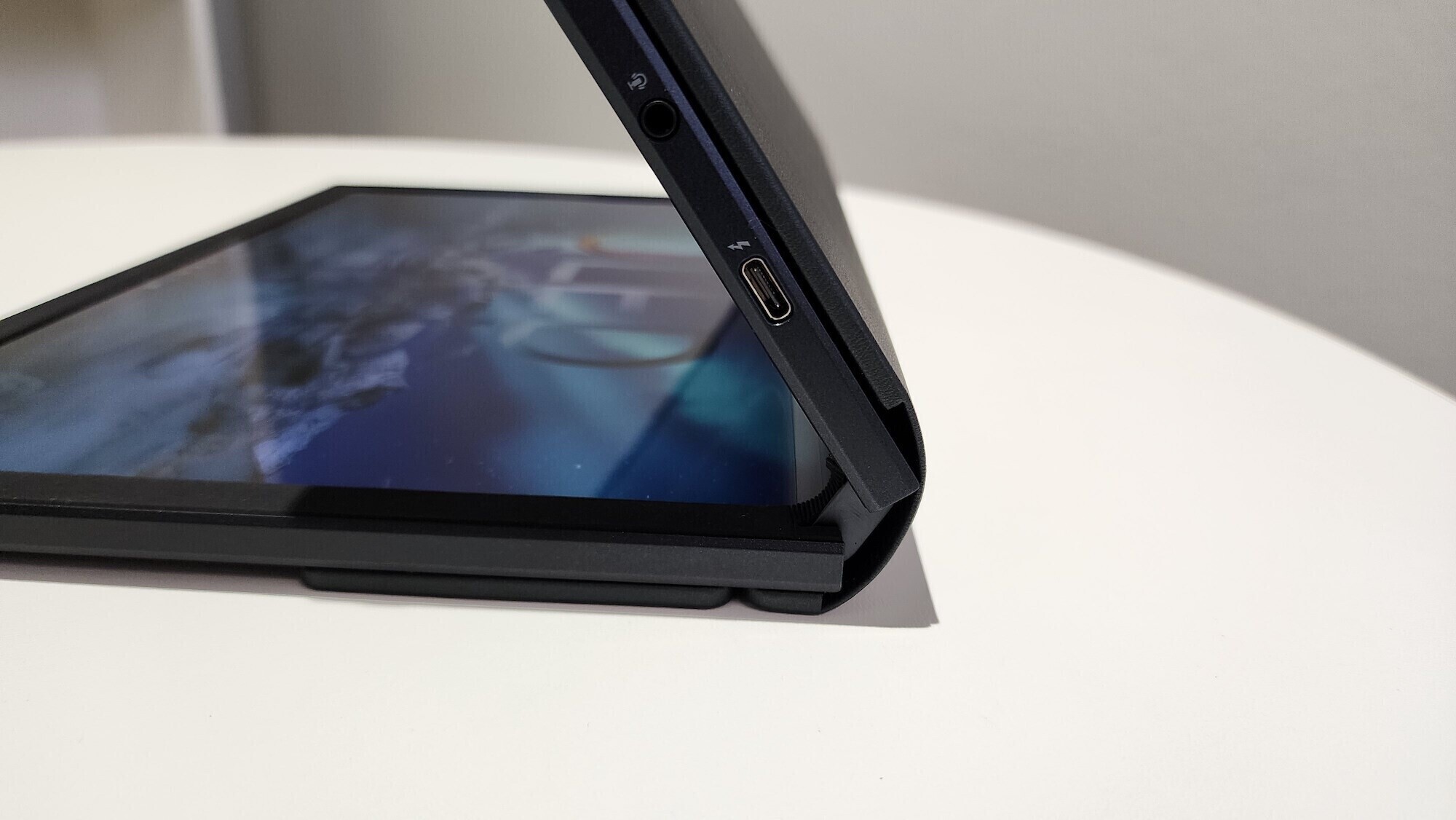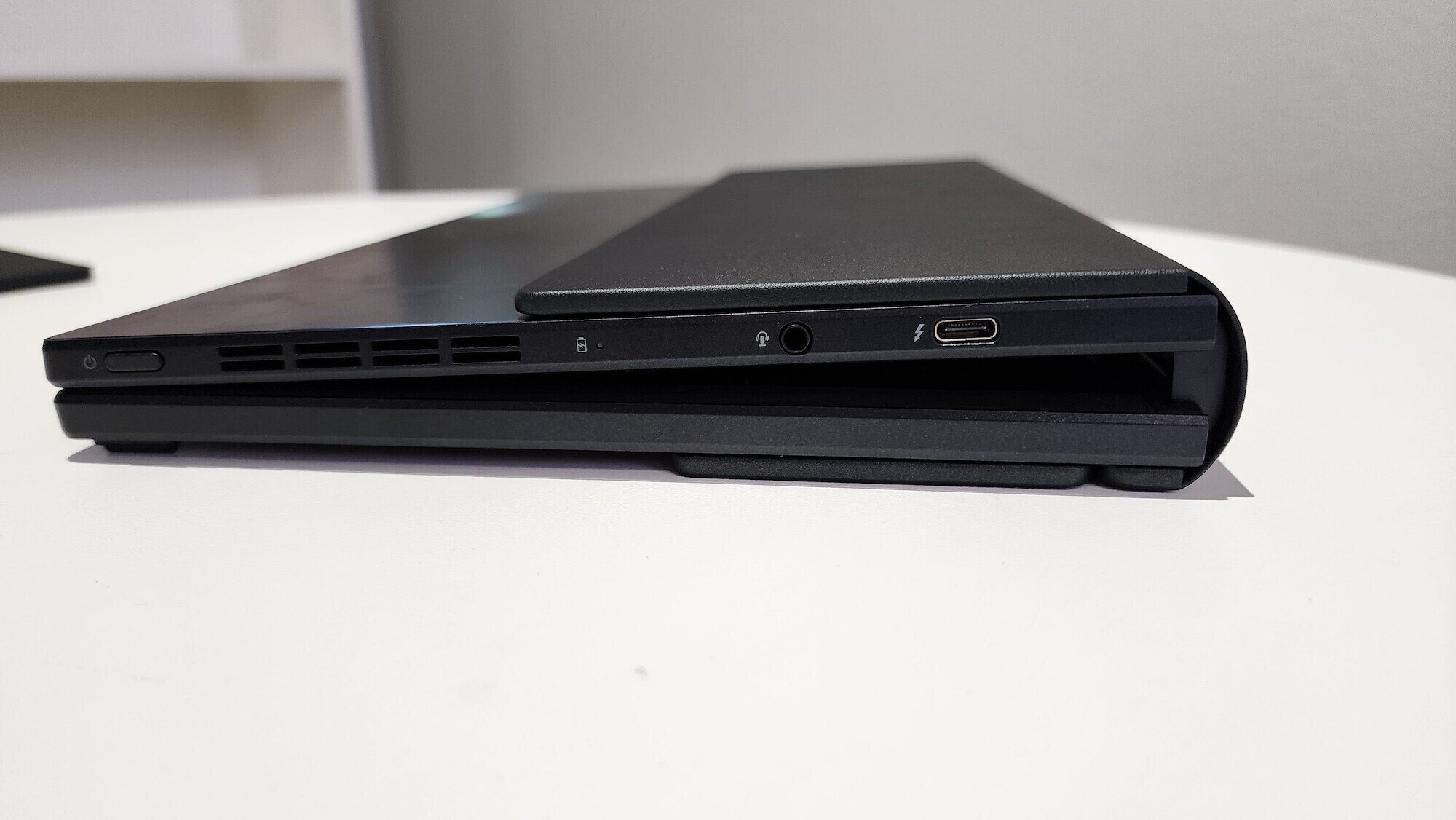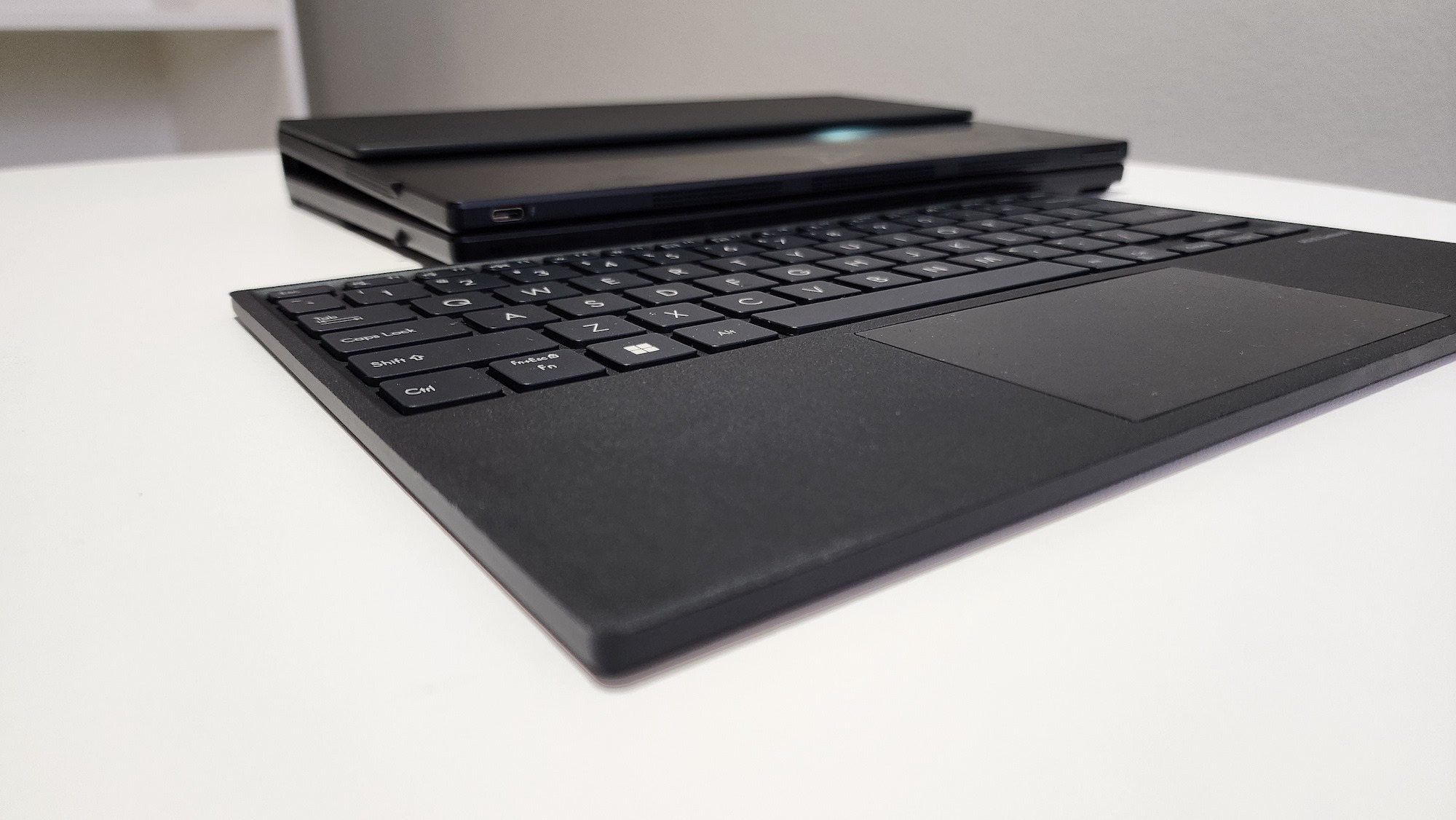Asus has done an amazing job of making a flexible notebook. We're just not sure why they've gone to all this effort. Its functions can be easily replaced with less complicated, more powerful hardware at less than the price of entry here. The Zenbook 17 Fold is an excellent device. You still shouldn't buy one.
-
Design
-
Display
-
Performance
-
Price
-
Features
Flexible notebooks still have some way to go. That’s the lesson that Asus’ new Zenbook 17 Fold taught us in the time we had it in our possession.
Don’t get us wrong. There’s nothing wrong with the technology that you won’t also see in the folding smartphone field. But the Zenbook Fold reminds us of the blockchain. It exists but there doesn’t seem to be a use for it beyond existing. Other solutions perform the same function with less chance of something going seriously awry.
Legitimately cool
There’s no denying that the Zenbook 17 Fold is a serious conversation piece. The cool factor is off the chart. Any time you pull it out in public, people will marvel over it. It’s a folding screen that’s also a laptop sometimes. That sort of thing is really hard to overlook.
Asus has done a great job putting it together. There are some caveats — the screen isn’t as durable as even a regular touchscreen and you’ll encounter a set of folding and unfolding instructions if you buy one. It’s more fragile than your everyday notebook. Close the screen over the keyboard when it’s not properly locked on its magnetic base and you’ll have made a very expensive mistake. But it’s still an eye-opener. People will ask questions.
It’s a regular old notebook, at the end of the day, though. The keyboard appears sliced off a regular Asus PC, aside from the small power switch on the bottom right corner. The 17.3in/12.4in display is as bright and clear as any of Asus’ other OLED screens. And that’s the problem.
Find your why
There doesn’t seem to be a point to the Asus Zenbook 17 Fold beyond “because we can”. It’s not meeting a need or asking a question. It’s just kinda cool. It’s not the level of pointless of, say, the Juicero. That device was completely superfluous. The Zenbook Fold is still a completely functional computer. But if that’s all you want, why not just buy a functional computer? Asus’ own Zenbook Pro 16X OLED features an amazing screen, sports a massive amount of power, and is perfect for video and image editing. It blows the Fold’s performance out of the water, for R5,000 less.
Inside the Fold, you’ll encounter a Core i7-1250U, 16GB of RAM, and a terabyte of storage. It’s not a bad load of specs but you can do better for about R25,000 less than Asus’ asking price. You can do considerably better if you jettison the idea that a folding notebook screen is an item you absolutely must have in your life. Heck, if you’re only after power, R65,000 will buy you a 16in 165Hz display, a Core i9-12900H processor, 16GB of RAM, 4TB of SSD storage, and an 8GB RTX 3070 Ti GPU from Asus. By comparison, the Fold is a Lamborghini shell covering a Toyota Corrola motor. Sure, it looks cool, but what can it do?
A laptop with extra steps
We really can’t fault Asus on anything traditional. The Zenbook 17 Fold’s build is great, even if there are many warnings about the fragile display. You don’t have to treat it like it’s made of porcelain, but a little more care is required. Display quality, as always, is top-notch.
The keyboard, as mentioned, looks like it was sliced from a regular notebook. It’s a little flimsy and the fact that you have to turn it on and off is a little irritating, but using it is just like using a traditional (and cheaper) Asus notebook. The trackpad is responsive if a little compact. The keys are standard chiclet buttons. You’ve been here before. It’s competent but nothing special.
Elsewhere, there are the usual features you’ll find in any other Asus notebook, like biometric login and the like. Again, that’s the problem. There’s nothing beyond the screen that is any different from a regular old notebook. And those regular parts are complicated by the fact that the 17.3in display has to fold in half. It’s less convenient to use than a normal laptop. It’s more expensive than a normal laptop. And it doesn’t do anything differently from a normal laptop. It’s still cool, we’re just not sure why it exists.
Asus Zenbook 17 Fold verdict
What Asus has done with its flexible notebook is a technical achievement. It’s a 17.3in folding tablet that also happens to contain an entire computer. Paired with a very skinny Bluetooth keyboard, it’s an ultraportable notebook. But that’s as far as it goes. It doesn’t do anything better than any existing solutions. It’s not more powerful. It doesn’t offer better utility unless you really need a 17.3in display with you at all times. Even then, there’s the price factor. Even at its base price of R65,000, you can afford two 512GB M2 MacBook Pros and still have cash left over. A couple of thousand rand more and you can outfit your dual Apple PC setup with a screen that’ll at least match what Asus is fielding. In short, it’s awesome. But we’ve got no idea why anyone would want to buy one over, say, a regular notebook and enough monitors to always have one on hand.

